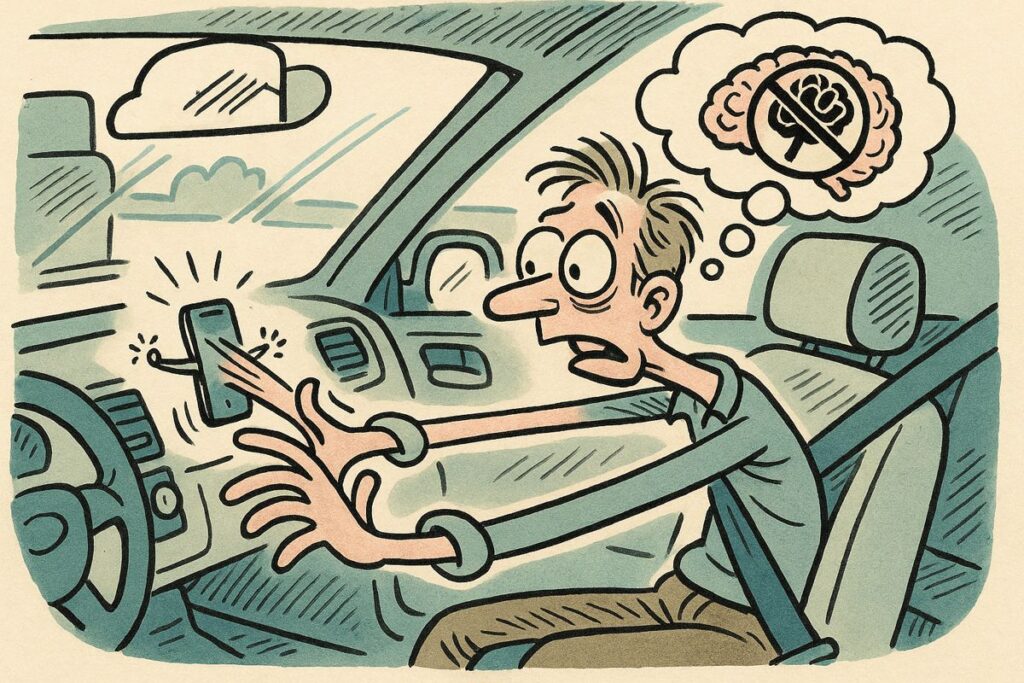Introduction: A Landmark Decision for Road Safety
A California appellate court has issued a definitive ruling: holding a cellphone while driving is illegal for any reason. This decision expands the scope of prohibition beyond texting or calling, covering all uses—including navigation apps and music selection. The goal is clear: eliminate ambiguity, reinforce boundaries, and make distracted driving a thing of the past.
The Law: No More Gray Areas
- Absolute Ban: Any physical act of holding a phone while driving is now prohibited, regardless of purpose. This means that even a quick glance at your GPS or adjusting a playlist is grounds for a violation.
- No Exceptions for Non-Communication: The ruling erases the distinction between communication (calls, texts) and non-communication uses (maps, music).
- Permissible Use: Drivers may use mounted devices, but only with a single swipe or tap, or by using voice commands. Extended interaction or picking up the device is illegal.
- Enforcement: While the law is now clearer than ever, enforcement can still vary between jurisdictions, creating some inconsistency across the state.
Why This Matters: The Dangers of Distraction
Distracted driving is a leading cause of traffic accidents and fatalities. In recent years, thousands of crashes and hundreds of deaths in California alone have been linked to drivers using their phones. Even a brief distraction—just a couple of seconds—can dramatically increase the risk of a crash. With smartphones functioning as “pocket-sized computers,” the temptation to look at screens is ever-present, making precise legal boundaries more crucial than ever.
Beyond Prohibition: Changing Mindsets, Not Just Enforcing Rules
While the law sets a strict boundary, behavioral science and expert analysis suggest that prohibition alone is not enough to solve the problem of distracted driving. Simply banning phone use can sometimes make the forbidden behavior more tempting. To truly eliminate distracted driving, a cultural and psychological shift is needed:
- Mimicking Alcohol Mindset Shifts: Just as society has developed a reflexive aversion to drunk driving, drivers must come to see phone use behind the wheel as just as dangerous and unacceptable.
- Developing Reflexive Aversion: The goal is not merely compliance with rules, but cultivating an instinctive avoidance of phones while driving—seeing them not as innocent gadgets, but as potential hazards on par with other well-recognized dangers.
- Replacing Old Justifications: Outdated rationalizations like “I was just using the map” or “it was only for a second” must give way to new beliefs: any phone use while driving is a risk not worth taking.
- Building New Habits: Safer driving comes from ingrained habits. Setting up navigation, music, and messages before starting the car, and using “do not disturb” modes, can help drivers avoid the urge to interact with their phones on the road.
Practical Steps for Drivers
- Mount Your Device: Use a dashboard or windshield mount; keep it in your field of view without obstructing vision.
- Embrace Voice Commands: Set up voice assistants for hands-free interaction.
- Plan Ahead: Enter your destination and music choices before starting the car.
- Pull Over if Necessary: If you must interact with your phone, do so only once safely stopped.
Conclusion: A New Era for California Roads
The California appellate court’s decision marks a turning point in the fight against distracted driving. But the real victory will come when drivers don’t just follow the letter of the law—they change their mindset entirely, developing a natural, reflexive aversion to phone use behind the wheel. By moving beyond prohibition and focusing on lasting behavioral change, California can pave the way for safer, more attentive roads for everyone.



